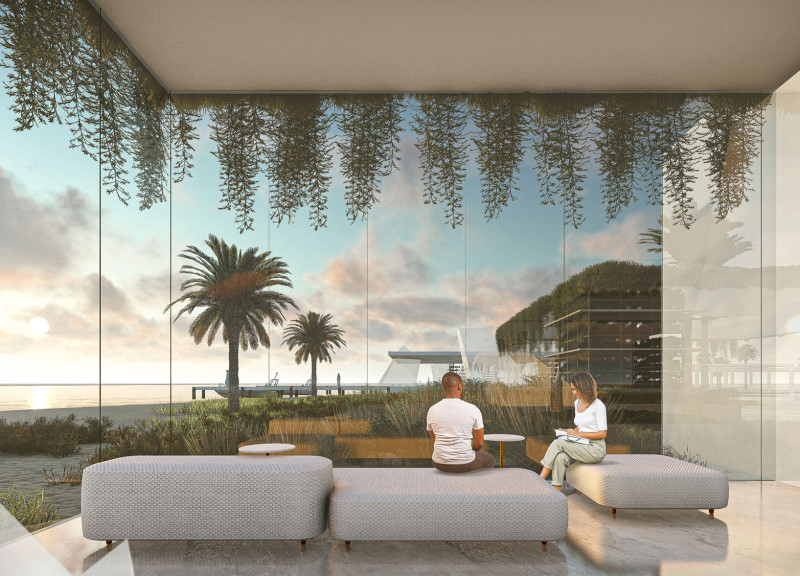5 key facts about this project
Rajajil is located on Barkan Island in the Red Sea, close to Neom in Saudi Arabia. It combines spaces for therapy, social interaction, and contemplation within a design focused on promoting well-being. The layout invites visitors to step away from their everyday lives, offering a chance to find peace and reflect.
Organs
The design includes specific areas known as "Organs" and "Cells." The "Organs" feature essential spaces such as the Prayer Space, Common Area and Library, Dining Area, Gathering Room, Therapy Space, Boat Deck, and Helipad. Each area serves a unique function, designed to encourage both community engagement and personal solitude. This careful balancing act between collective and individual needs shapes the visitor experience.
Cells
The "Cells" further refine these functions into specialized units. The Meditation Pods, Contemplation Pods, Open Air Therapy/Activities, Open Dining, Farming Units, Quiet/Sleep Pods, Reception, Kiosk, Service/Storage, and WC are examples of how spaces are designed to support various activities. These units encourage personal reflection while also accommodating group interactions, with the farming units emphasizing sustainability and connection to nature.
Design Language
The architectural design aligns organic forms with geometric shapes. This arrangement represents the journey of life, creating a rich experience for users. Vertical uneven shapes interact with smoother lines, mimicking the horizon. The balance of these contrasting elements invites visitors to explore their emotional landscape within the space.
Environmental Context
The design relies on environmental elements—water, air, and earth—to enhance the visitor experience. Water symbolizes emotion and encourages meditation, while air is associated with transformation and outdoor activities. Earth provides a sense of stability, reinforcing ties to nature, particularly through farming and communal dining. The integration of these elements creates an atmosphere that resonates with the people who visit.
As visitors navigate this thoughtfully designed environment, they can engage with the natural world around them, promoting a sense of healing and reflection. The architecture serves as a quiet companion on their journey toward peace.



















































